In order to reduce the carbon footprint it is important that we account for the energy that is embodied in the materials that we use. With Cableizer you can calculate the embodied energy and carbon of any cable.
Posted 2018-06-08
Categories: New feature, Theory
Embodied energy is the amount of energy consumed to extract, refine, process, transport, and fabricate a material or product. It is often measured from cradle to factory, cradle to use, or cradle to grave (end of life). Likewise, the embodied carbon footprint is the amount of carbon (CO2) emission to produce a material.
Because different production paths consume different amounts of energy, the energy used in the production of an organic chemical depends on its so-called feedstock which is derived from crude oil refining and natural gas processing. Chemicals obtained from the cracking and distillation of petroleum or inorganic sources are called raw materials. The total energy consumed in the production is the sum of the energy inputs for itself and all its predecessors, starting from the raw material. It takes about 2 kg of fossil fuels to produce 1 kg of plastics.
Energy is not only spent and CO2 released in producing the material but also in shaping it into its desired form. Primary shaping processes are e.g. casting, rolling, extrusion, molding, etc. Secondary processes are e.g. welding, heat-curing, painting, coating, etc. The listed values are supposed to contain the energy and CO2 for materials and processes specific to cable production.
The search for correct values was most important in order to create this new feature. To find and collect verified material parameters for embodied energy and embodied carbon was very difficult. The found values of some materials had big variations. The most important sources are listed here:
First let's look at some materials typically used for insulation, filler/bedding and jacket of cables.
| Non-metallic materials | Energy [MJ/kg] | Carbon [kgCO2/kg] | Source / Comment |
|---|---|---|---|
| Polyvinyl chloride (PVC) | 77.2 | 2.61 | (1) general type |
| Low density polyethylene (LDPE) | 78.1 | 1.69 | (1) |
| High density polyethylene (HDPE) | 76.7 | 1.57 | (1) |
| Polypropylene (PP) | 89.5 | 3.69 | (2) production + extrusion |
| Natural rubber (NR) | 88.0 | 3.6 | (2) production + forming |
| Butyl rubber (isobutylene isoprene rubber IIR) | 140.0 | 8.3 | (2) production + forming |
| Bitumen | 51.0 | 0.43 | (1) |
| Jute | 10.0 | 4.05 | (4) ≈hemp |
| Compounded jute (Jute fiber reinforced polypropylene) | 41.8 | 3.91 | 60% jute + 40% PP |
Let's have a look now at some typical metals in a cable, used for conductor, screen/sheath and armour.
| Metallic materials | Energy [MJ/kg] | Carbon [kgCO2/kg] | Comment |
|---|---|---|---|
| Copper (Cu) | 55.0 | 2.6 | EU tube & sheet type |
| Aluminium (Al) | 155.0 | 8.24 | general type |
| Lead (Pb) | 25.21 | 1.57 | general type |
| Steel | 20.1 | 1.37 | general type, 59% recycled content |
These are only the most common materials. We have values for much more, all listed in the documentation.
As an example, we want to compare two cables. Note that the insulation thickness is larger for cables with smaller conductor diameters, therefore the cable with copper conductor shows higher values for embodied energy and carbon in the insulation. Bedding and jackets have the same thicknesses, so differences in bedding/filler and jacket are only due to the difference in overall diameters.
| 2XS(FL)2Y 1x500mm2 Cu 110/64kV | A2XS(FL)2Y 1x800mm2 Alu 110/64kV |
|---|---|
 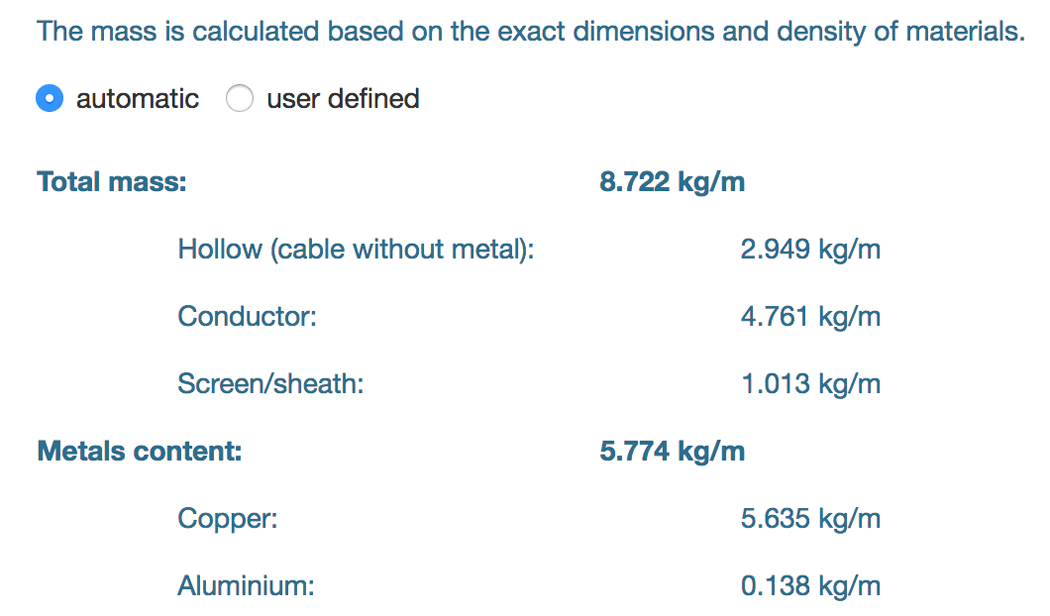 |
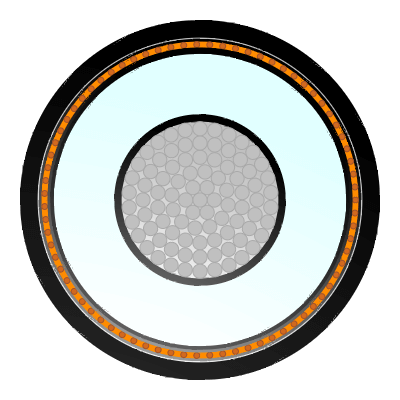 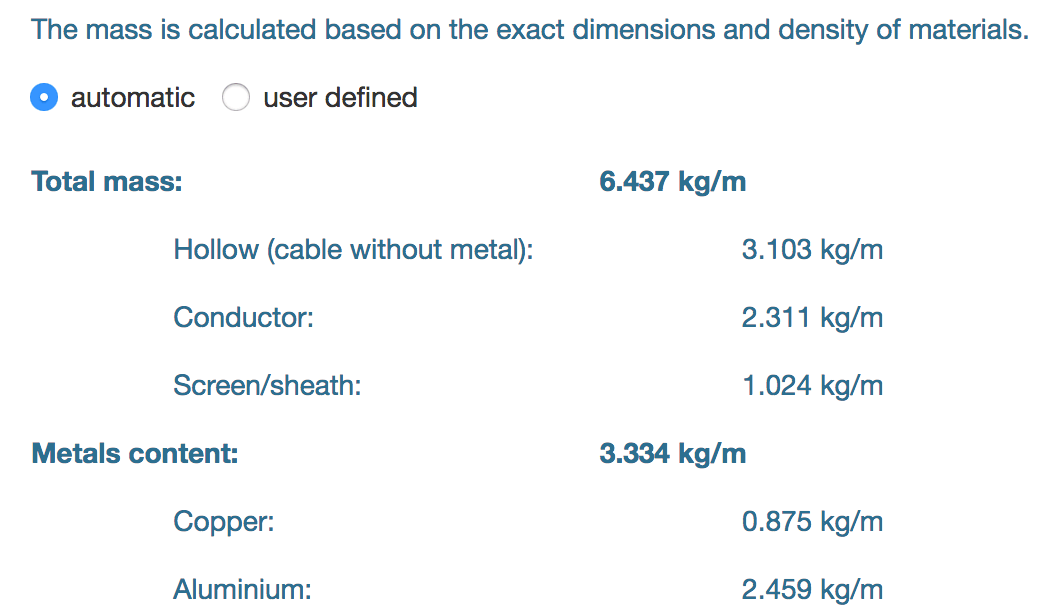 |
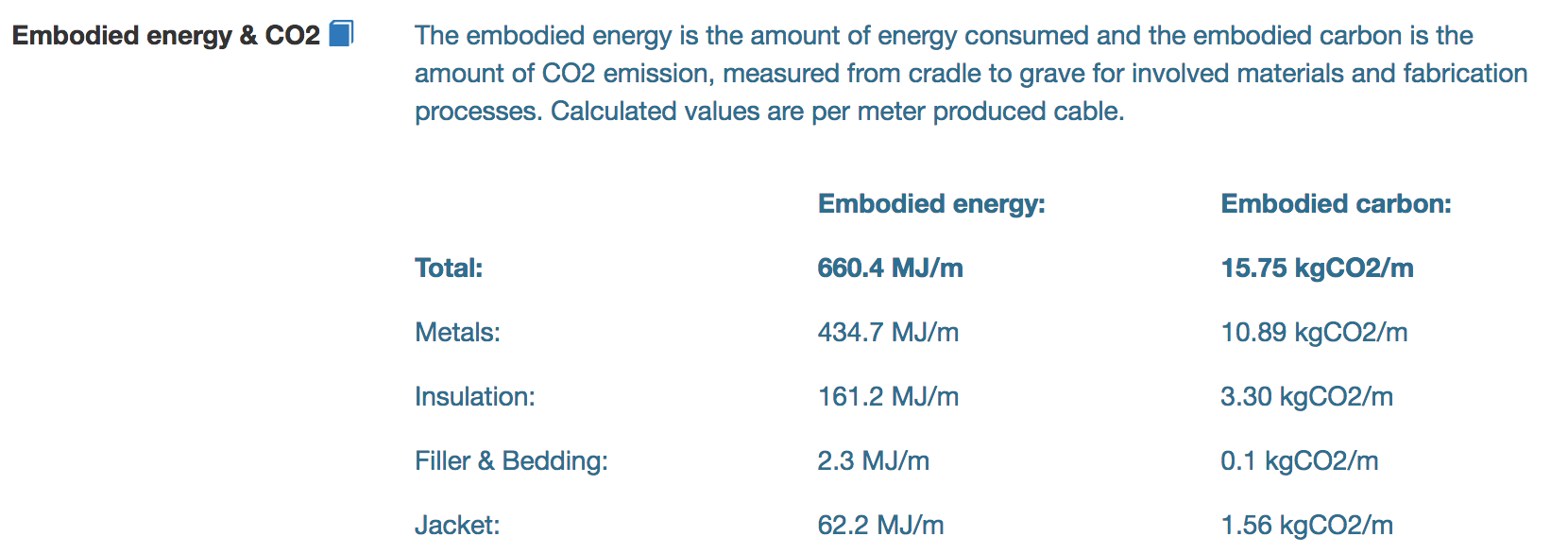 |
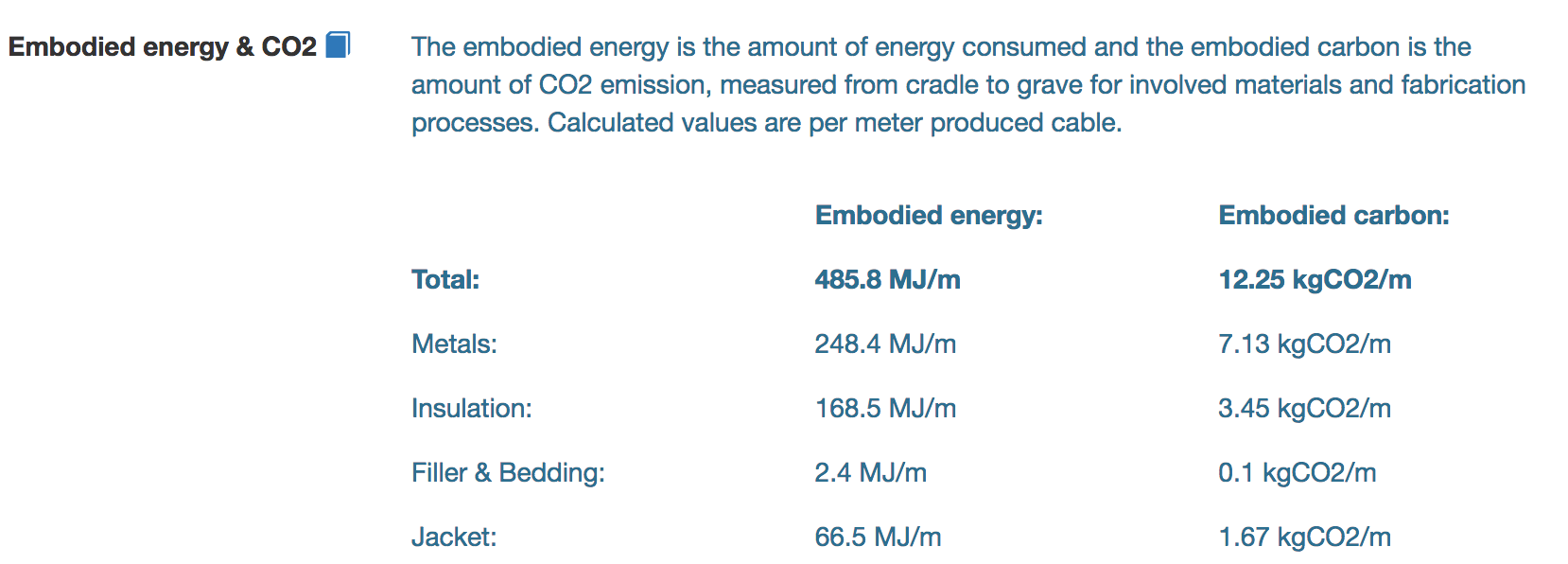 |